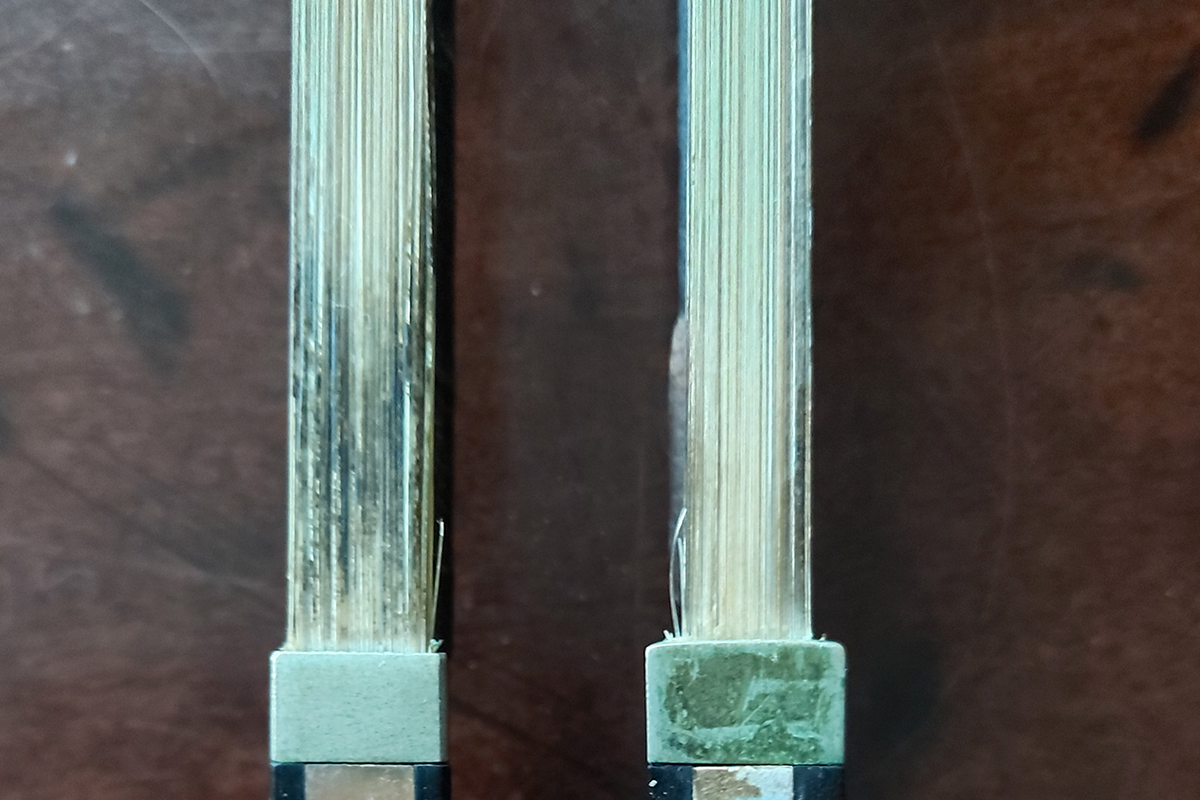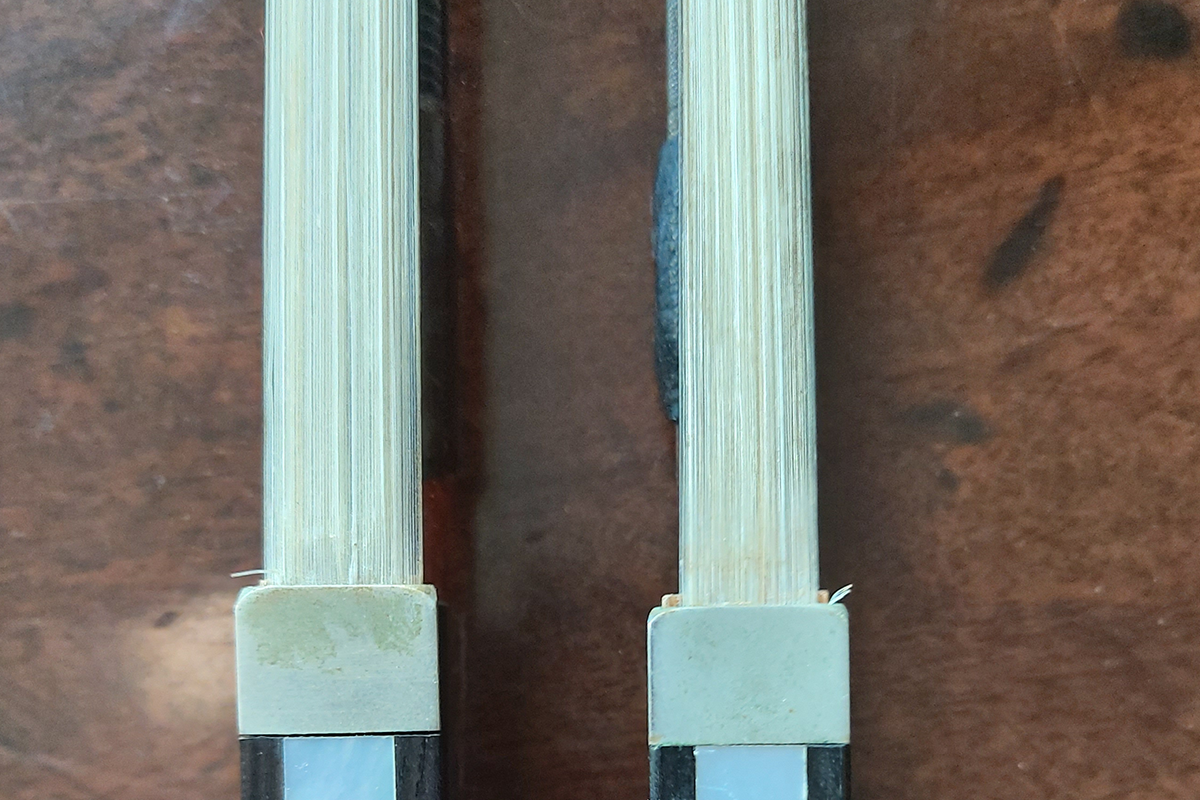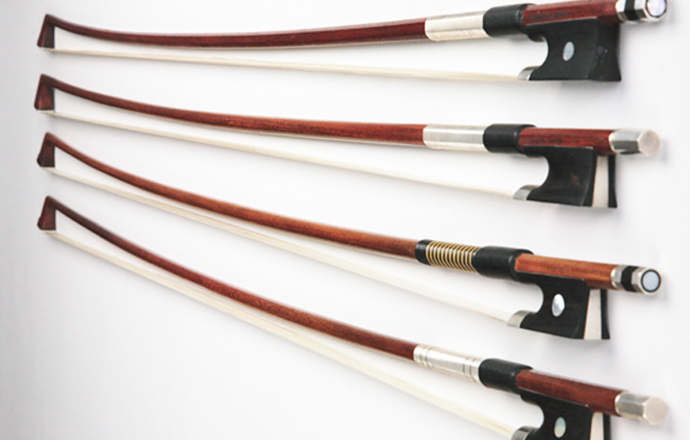When do I need a rehair for my bow? How does the bow feel? How does the bow look? Ask yourself these 2 questions and you’ll find the answer.

Two beautifully rehaired bows ready to go
When your bow has been rehaired with fresh new horse hair, as above, then your rosin is applied. Under a microscope it is possible to see the scaly appearance of the hair. In fact each individual hair looks as if it has tiny little hairs coming off it, itself. The rosin sits in these microscopic scales.
When the bow is drawn across the string the rosin adheres to the string, creating friction with the hair. The full width of the hair is called the ‘ribbon’. When your bow is on tension the hair resembles a ‘ribbon of white satin’.
You would hardly know the ‘ribbon’ is actually approx. 155 single hairs for violin bow, 175 for viola bow, 225 for cello bow and 300 for a double bass bow!
Time for a rehair if…
Over time as you have applied more and more rosin the bow may start to feel slippy when in use. If the bow is sliding across rather than holding on to the string when in use, this will indicate that there is a build up of rosin on the scales, so much so that they are clogged and unable to perform their ‘friction ‘duty.
If the ‘ribbon’ of hair on the bow looks dirty.
Once again this indicates clogging of rosin. The dirt can also be grease and perspiration from hands continually touching the bow when in use. Also if your case is a little tired inside the dirt and dust on the fabric can also transfer to the bow hair when in the case.
The pictures below are extreme cases. Once any discolouration appears near the hand holding end of the bow (at the ‘frog’) the hair is being compromised. If you play regularly then keep an eye on its deterioration as it will need addressing sooner or later.

Dirty ribbon
Looking at your bow, as indicated in the pics (below), you may see hair loss, particularly on the playing side where a little more pressure is applied.
Each time you lose a few hairs the ‘ribbon’ of hair decreases in width. The more hairs lost the greater the loss of control and playability.
I have been handed bows with 30% of the hair missing. This impacts hugely when playing, to the control, balance, feel and sound production.
Here the bow on the left has lost just a few hairs so border line for needing a rehair. If you are a professional or play regularly it is worth having the rehair done even at this early stage of impair. The bow on the right has lost a substantial amount of hair, so much so that the little ‘spreader wedge’ that keeps the hair evenly spread out and the ferrule in place, is protruding.
This wedge is at the point where it can literally pop out at any time and the bow hair will spring together bunching up, becoming unplayable.

Hair loss
Rehairs are inexpensive and can transform how your instrument feels to play, and how it sounds! Get in touch if you would like to make an appointment to show me your bow, to discuss whether it is indeed in need of a rehair!


Leave a comment